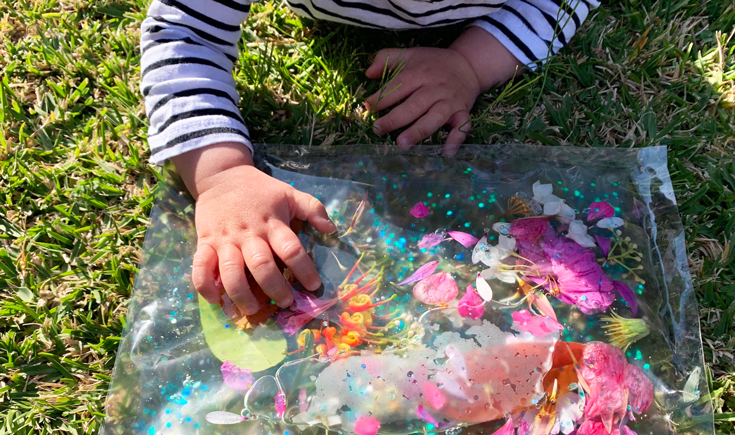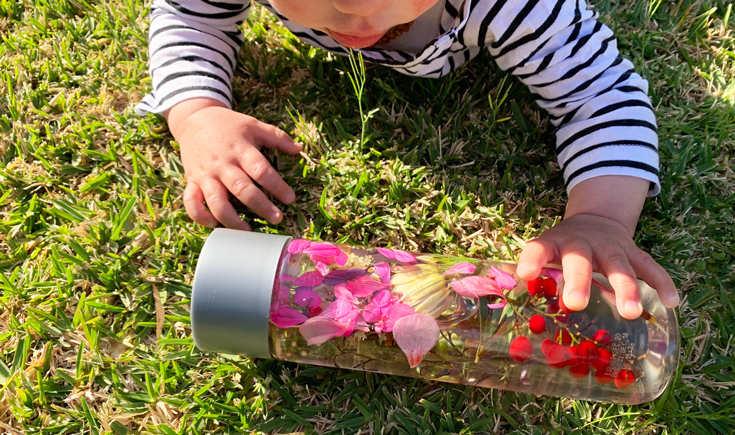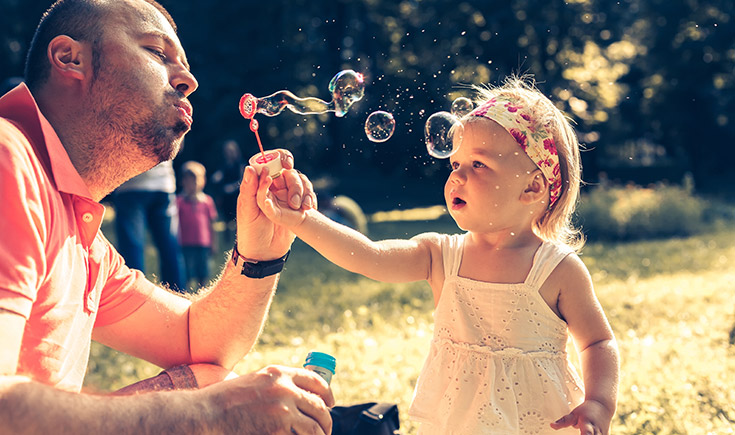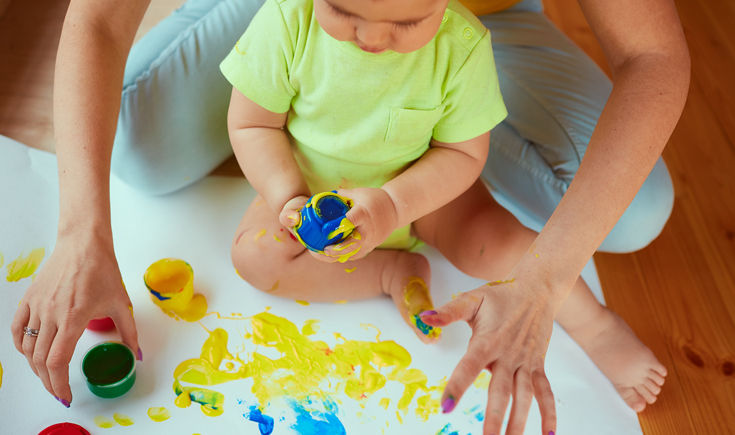

Babies use all seven senses to explore and make sense of their world. That’s why it’s important to provide as many opportunities as you can for them as they learn through sensory exploration.
Sensory play, in addition to being fun and interesting for babies, is critical for brain development. It includes any activity that stimulates your baby’s senses: touch, smell, taste, movement, balance, sight, and hearing. Watch them as they play, investigate, explore, and create!
Here are our top 10 Spring sensory activities to do with baby that focus on sensory play for babies up to 12 months. These activities will fill your baby’s love cup, while you receive some deeply rewarding bonding and nurturing time with your little one.
1. Cuddle time
Cuddling your baby is not only wonderful for you, but it helps to promote healthy physical and psychological development in your baby. Your touch is more powerful than you think – it helps to lower stress hormones in your baby’s body, which then leads to better sleep patterns and a tendency to be less fearful later on. Creating that sense of security early on also releases the feel-good hormone oxytocin, strengthening the bond and increasing the feelings of attachment. Don’t forget to include other family members in cuddle time, it’s a great way to support healthy social development as well.
2. Baby sensory bag
It’s no secret that babies love to put things in their mouths. It’s just one of the ways they like to investigate something, so putting items in a bag allows them to explore them without any choking risks. Pop things such as water beads and toys into a ziplock bag, and then double bag it. You could seal the edges with sticky tape to make it extra secure. Other items could include hair gel, glitter, pom poms, beads, buttons, paint, playdoh, flowers, oats, stones, leaves, seeds, beans, and ribbons.
3. Play peek-a-boo
Peek-a-boo, often one of the first games babies learn to play, has many benefits. From about six months, when separation anxiety can start to appear in your baby, playing this game demonstrates that a little separation followed by a happy reunion helps to build their trust and comfort. Being playful with your baby is a lovely opportunity to connect and engage with them beyond all the usual feeding, changing, sleeping, and bathing.
4. Sing to them
You don’t have to be talented, and you don’t only have to sing nursery rhymes. Anything goes, you could even just make it up. Sing while you’re cuddling, going for a walk, changing their nappy, or bathing them. Singing not only entertains them but also soothes them, so the witching hour is a great time to warm up your vocal cords. It will hopefully have the added benefit of keeping you calm as well during this challenging part of the day.
5. Face to face time
Your face is honestly their favourite toy, so take the time to look your baby in the eyes, chat to them, make funny faces and voices, and observe as your baby tries to imitate you. Chatting to your baby lays the foundations for language development. Feel free to just narrate what you’re doing, or what you see on your outings together.
6. Sensory bottles
Sensory bottles are the perfect distraction while you get on with doing other things in the home. They’re also wonderful calming tools for those times your baby’s feeling unwell, unsettled, or overwhelmed. The glass water bottles can be sealed with a hot glue gun, but equally you could use plastic bottles and then super glue the lid on. Check out Pinterest for all kinds of wonderful ideas to fill them, such as glitter glue, baby oil, food dye, rice, and plastic animals.
7. Bubble fun
It can be easy to feel a little overwhelmed by all the amazing sensory play ideas you see online, and you might wonder if you should be doing more to amuse your baby. Please just keep it really simple, and remember that everything is completely new in your baby’s eyes. Babies love to watch you blow bubbles and something as simple as that helps to develop your baby’s eye movements, as well as their language development hearing words like, ‘pop’, ‘bubbles’, and ‘look’.
8. Listen to music
Music plays an important role in your baby’s development. Playing music to your baby can activate neural pathways that are responsible for creativity, memory, language, and emotional intelligence. Play music from your youth to get those happy, nostalgic vibes (and even have a little lounge room boogie to get your body moving!).
9. Edible finger paints
With any kind of sensory play activity, you have to assume that it’s going to end up in your baby’s mouth, and that it’s going to be messy. Making edible finger paints is easy using only two ingredients: yoghurt and natural food dye. Ensure that yoghurt is safe for your baby to eat first (over six months), as in they should have eaten it at least three times prior without any reaction. Use Greek yoghurt (or any other dairy alternative) without any added fruit or sweeteners, and add a drop or two of natural food dye. You might decide to use one colour, or divide it up into containers and use several colours. Head outside for this activity and paint some paper, or let them sit in the bath and paint the bath.
10. Go for a walk outside
Getting outdoors has many emotional and physical benefits for both of you. You’ll both receive important Vitamin D, fresh air, and a change of scenery from the home. Being outside is a whole new world of sensations for your baby. The sounds of traffic, the breeze on their face, the sunshine warming their body, and the different smells.
(Note: Please remember to supervise your baby at all times during sensory activities)
For Sensory play ideas check out some great tips here



























